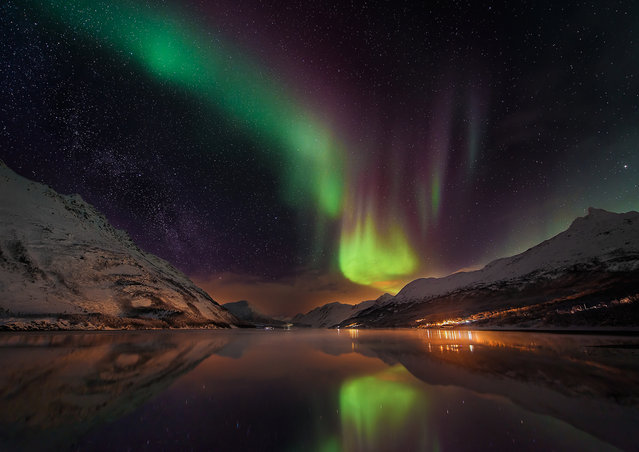
Some of the best entries so far in the 2016 Insight Astronomy Photographer of the Year competition. There are two weeks left to enter, and the winners will be announced in September. Here: Aurora over Laksvatn Fjord, Laksvatn, Norway. The aurora borealis dances in the skies over the town of Laksvatn, with the Milky Way to the left. The image is a single shot with no compositing, only post-processing to bring out the aurora, and some colour corrections. The photographer Matt Walford said: “I love the way the northern lights look like they are just wistfully dancing over the fjord, framed by the mountains on either side”. (Photo by Matt Walford/National Maritime Museum)

Earth’s Rise through the Universe, Hilo, US. Taken from the highest mountain of Hawaii, Mauna Kea, and overlooking the lava fields, the Milky Way mirrors the alignment of the horizon soaring over the volcanoes Mauna Loa (left) and Hualalāi (right). (Photo by Gianni Krattli/National Maritime Museum)
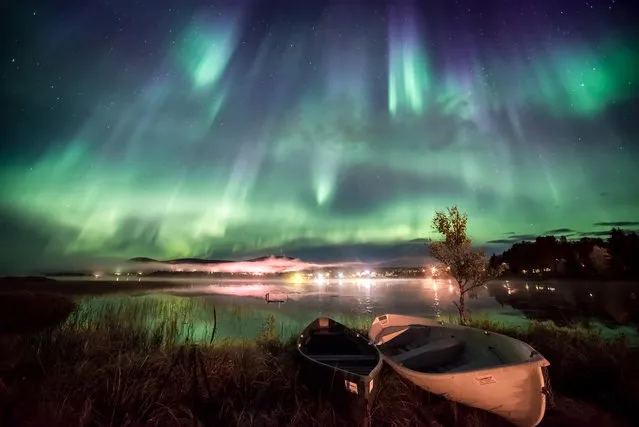
Kayaks, Äkäslompolo, Finland. Vibrant auroras in varying hues of blue and green swirl across the southern sky over lake Äkäslompolo in Finland. The photographer remembers the difficulty of choosing where to capture the phenomenal display as the night sky was overtaken by the light show. (Photo by Marcus Kiili/National Maritime Museum)
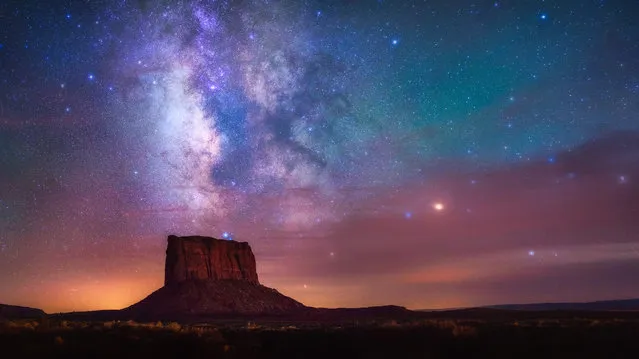
Monument Stars, Monument Valley, US. Despite being taken during the lunar eclipse of 2015, Albert Dros actually didn’t shoot the moon but took the opportunity to capture the amazing dark sky. Coming from a country (the Netherlands) with so much light pollution, this marked the first time the photographer had seen the Milky Way so clearly. The red glow in the sky is from the extraordinary atmosphere during the lunar eclipse – an experience Dros said he would never forget. This shot is a panorama comprised of three vertical shots. (Photo by Albert Dros/National Maritime Museum)
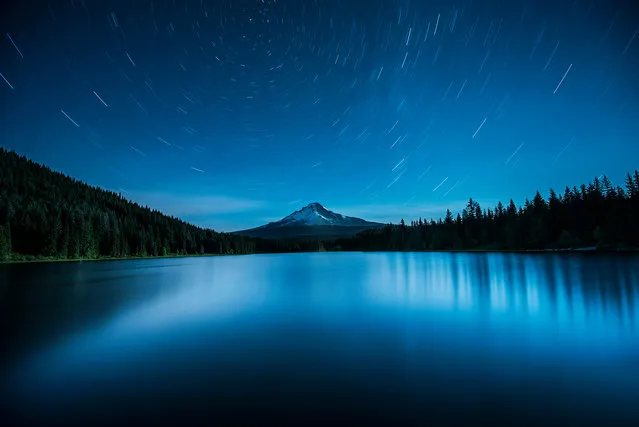
Polaris over Mount Hood, Oregon, US. The north star, Polaris, lines up almost perfectly with Mount Hood and reflects symmetrically in the beautifully serene Trillium lake. The photographer, Garrett Suhrie, used a 20-minute exposure to create the star trails charting the rotation of the Earth, that add further symmetry to the image. (Photo by Garrett Suhrie/National Maritime Museum)
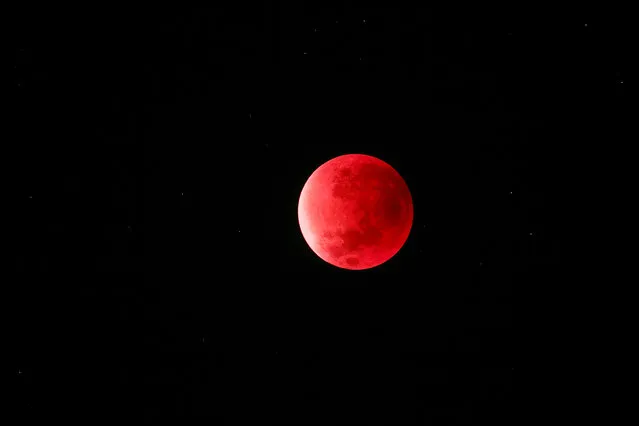
Supermoon Eclipse Boras, Sweden. On September 28, 2015, a supermoon coincided with a lunar eclipse, resulting in this photograph of the moon in a striking shade of red. A lunar eclipse occurs when the moon passes directly behind the Earth and is cloaked by our planet’s shadow. The only visible light is refracted through it, creating the unusual colour. Due to its red hue, a lunar eclipse is often referred to as a “blood moon”. (Photo by Peter Folkesson/National Maritime Museum)
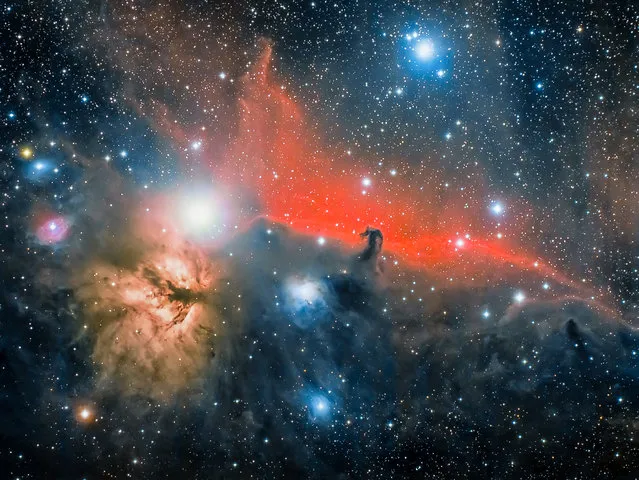
The Horsehead Nebula, La Jonquera, Spain. Situated in the constellation of Orion approximately 1,500 light years from Earth is the Horsehead nebula or Barnard 33. The appearance of its swirling cloud of dust and gases resemble a horse’s head, making it a popular target for astrophotographers and one of the most recognisable nebulas. (Photo by José Jiménez Priego/National Maritime Museum)
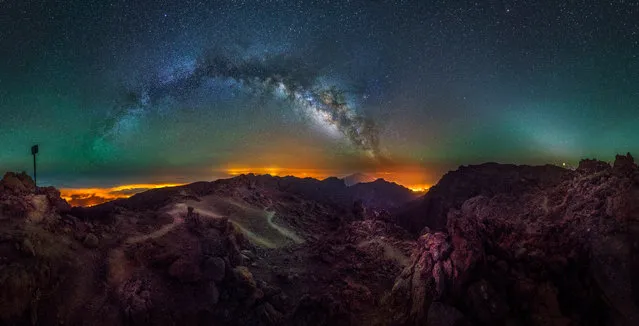
The Journey, La Palma, Spain. The Milky Way arcs over the Caldera de Taburiente national park. The lights from Tenerife, La Gomera and El Hierro island are also visible in the distance. The image is an 18-shot panorama. (Photo by Javier Martinez Moran/National Maritime Museum)
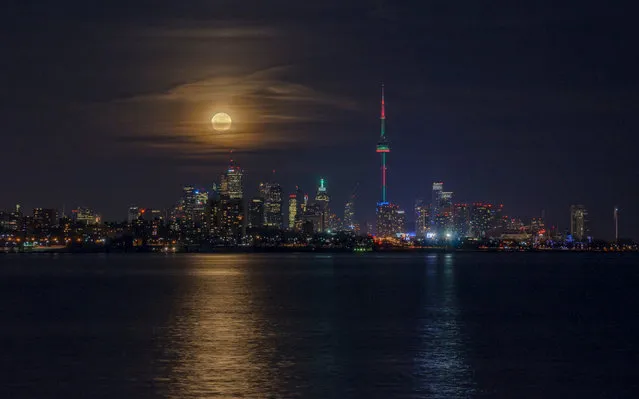
Christmas Full Moon Rise, Toronto, Canada. The thinning cloud layer seen across the face of the moon acted as a natural filter to reduce its brightness, offering the photographer a chance to try imaging the moonrise over the colourful skyline. The photographer had wondered whether it would be possible to photograph such a moonrise and finally decided to take the technical challenge with his eight-year-old camera and was fortunate enough to obtain a memorable image. (Photo by Andrew Yee/National Maritime Museum)
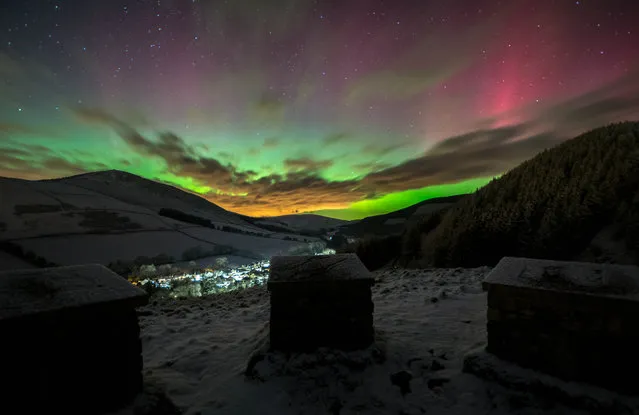
While the Town Sleeps, Innerleithen, UK. The photographer had witnessed the aurora this far south only once before, but this instance was much more intense and vivid than the previous sighting. Using the viewpoint of an old Roman hill fort above the sleeping town below, the photographer captured the aurora’s rare occurrence in that part of Scotland. The low cloud, lit orange by the city lights of Edinburgh in the distance, adds to the variety of colour and contrast of the image. (Photo by Ross Campbell/National Maritime Museum)
01 Jul 2016 12:13:00,
post received
0 comments
